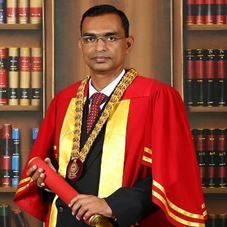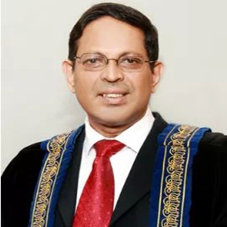Priyantha Bandara Builds Tools to Design Energy-Efficient Buildings

|
The whole world is abuzz with how we can reduce our energy consumption and Carbon footprint. Research has found that 30% of global energy is consumed by buildings for heating, air conditioning, lighting and other services. The major fraction of this energy is obtained by burning fossil fuels, emitting considerable amounts of Carbon Dioxide and many other toxins into the environment. |
 Prof. R.A. Attalage |
|
Any solution to global warming must require new thinking in this supply infrastructure and the built environment that it feeds. Buildings are complex structures that need to operate under challenging weather conditions to meet the requirements of its users and functional activities. For many building designers who are keen on the green building concept in an effort to reduce the carbon footprint, performance of buildings has become a timely topic of discussion. Building performance is measured by a variety of factors such as energy consumption, indoor environmental quality, health and well being of occupants, and their life cycle cost. UoM researcher Priyantha Bandara selected to research on the building envelope that largely contributes towards a building’s performance in many perspectives. The building envelope is the outer shell of a building, consisting of the roof, walls, windows, and the floor. This separates the controlled environment of the building from the surroundings. Key aspects of the building envelope include, orientation of the building, aspect ratio, window to wall ratio, window arrangement, material used, shading aspect and so on. Bandara says that, ‘finding the best combinations for envelope elements could improve the performance of buildings greatly". Though there are computer simulation tools that predict the energy consumption, these could do with further development, as the process is quite slow and do not explore successfully all possible combinations of envelope elements. They are also better known to match requirements of countries with cold weather than the hot and humid local conditions. The outcome of Bandara's research is the development of a general-purpose tool that enhances the power of available software that predicts building performance at the design stage. He has created a methodology to optimize performance predictions and a data exchange platform to combine efforts with currently available simulation tools. Together they are able to accurately predict the best combinations for the envelope from the very early stage of the building design to the ready to build design. The suggested methods were tested at the Department of Mechanical Engineering, UoM with generic Sri Lankan building designs that use materials commonly found here. His findings will no doubt help improve standards for buildings. Dr. Bandara has travelled to India, Philippines, South Korea, and Singapore for presentations on his research. He is now a Senior Lecturer at the General Sir John Kotelawala Defence University. In retrospect he says, "I am very glad to have done this PhD at UoM. My supervisor always motivated me. I also learnt about modern engineering tools and research methods, and was able to travel and make valuable contacts worldwide." Bandara completed his secondary education from St. Thomas’ College, Mount Lavinia, and entered the University of Moratuwa, where he completed his Bachelors, Masters and Doctoral studies, all in Mechanical Engineering. His PhD work was supported by equipment obtained through a grant awarded to his supervisor, Prof. Rahula Attalage, by the National Research Council (NRC). Prof. Attalage is also a product of the University of Moratuwa with a Mechanical Engineering background. He has worked extensively in the areas related to Energy, having obtained a PhD in Energy Engineering from the Ecole des Mines de Paris, France. He is specialized in Heat Transfer, renewable energy, energy efficiency and in particular performance of buildings, and is involved in developing standards for the Sri Lankan buildings sector. Prof. Attalage has led consulting teams for many Green building designs and certification projects in Sri Lanka and in the region. He was a member of the team that designed the MAS Intimates Thurulie eco-manufacturing facility, which was feted with the coveted Globe Award for Sustainability Innovation for 2010. Thurulie was also awarded the LEED Platinum Certification by the U.S. Green Building Council, making it the World’s first LEED Platinum built factory. LEED certification is a globally recognized symbol of sustainability. Dr. Bandara and Prof. Attalage plan to extend this work to more complex buildings operating under dynamic conditions and use the knowledge gained to improve the robustness and effictiveness of standards for building energy performance. |
||

